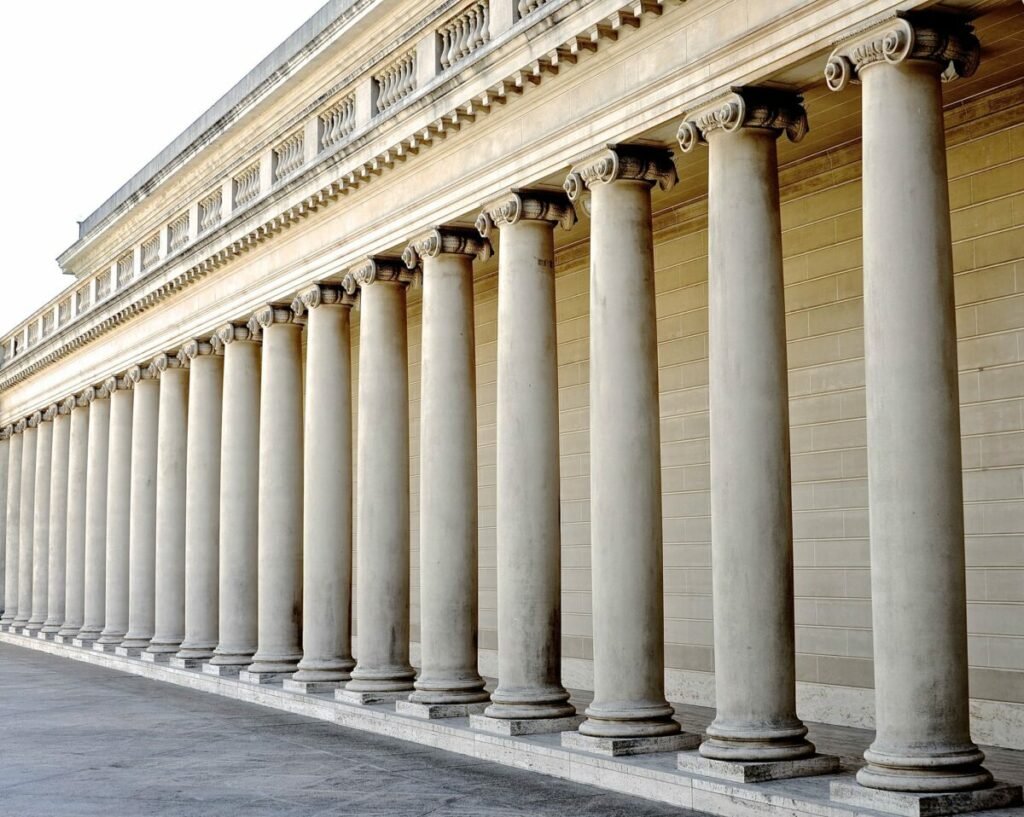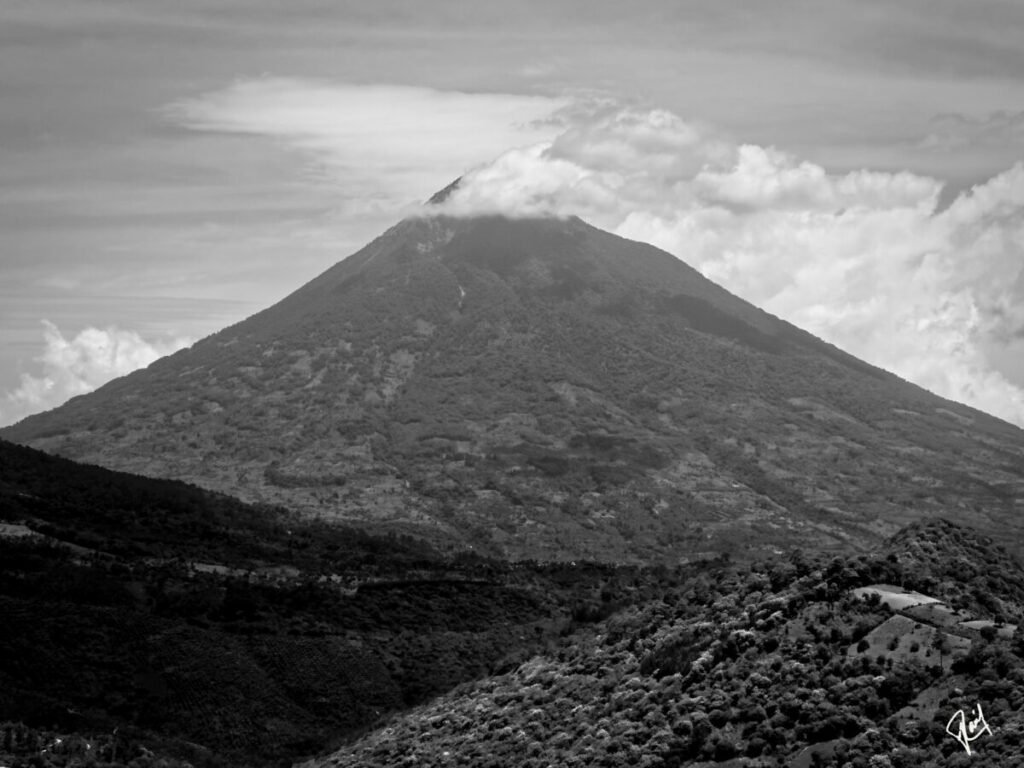Mary Alice Hostetter has earned an Honorable Mention in Streetlight’s 2023 Essay/Memoir Contest
There was no real reason for volcanoes and pandemics to become associated in my imagination, but they did. The only actual link was on the first post-pandemic travel my wife and I did to visit family on the West Coast. While there, we went to the Palace of the Legion of Honor to see the exhibit with the less-than-upbeat title, “Last Supper in Pompeii.” It was a celebration of food and drink, with frescoes and kitchen utensils, crockery and furniture, delicate mosaics. The final room of the exhibit displayed an epoxy cast encasing the skeleton of a young woman who had fallen victim to the fury of the unexpected eruption of Mt. Vesuvius on the August day in 79 A.D. Her jewelry was displayed in a nearby showcase.

During the time when we thought the pandemic might last a few weeks, months at the most, and travel companies suggested we spend our time thinking about past travel experiences, since new travel was temporarily interrupted . . . I started giving my volcanic encounters over the years serious reflection.
I have long been fascinated by volcanoes, awed by them. The first to settle into my psyche was the aforementioned Vesuvius, a volcano I never actually met. I remember as a teenager reading about the last days of Pompeii, the rapture-like suddenness of the eruption, striking people, like the epoxy-encased young woman in the exhibit, when they were not expecting it, giving them no time to prepare, no chance to escape. They were literally stopped in their tracks, killed by the heat or the poisonous gas. It was a cautionary tale, the story of Pompeii, a lesson to live your life so you would be prepared for such a sudden end. Growing up in a religious tradition with heaven and hell and the second coming feeling all too real, a looming volcano was a reminder to be prepared.
The first volcano I saw up close was in Nicaragua, where I had gone to visit my brother, a physician on a public health assignment in Puerto Cabezas. During our travels around the country, we hiked to the top of the Masaya volcano. As we neared the crest, I smelled the acrid, sulfury smoke. All was deathly quiet except for the squawking of parrots. At the rim, looking down at the glowing, molten core, I felt as if I was gazing into the gates of hell. I recalled lore I had heard that in ancient times people believed angry gods lived in volcanoes and could be appeased only by the sacrifice of children or young women. I quickly retreated from the precarious edge.
Years later, on a trip to Guatemala, the volcano capital of central America, volcanoes seemed to be everywhere. The most stunningly beautiful of those we saw were the three standing in the middle of Lake Atitlan. The view from our hotel in Panajachel gave a perfect vantage point. Each evening a hush fell over the courtyard as guests watched the sun set behind the trio. I never considered they could erupt again, which I since learned is a real possibility. In those moments they felt more serene than sinister, more magnificent than looming.
In Antigua, Guatemala, the danger seemed more real, with smoke rising from the nearby Volcano de Fuego. Just a few years after our visit, in 2018, that volcano erupted, decimating villages in the lava’s path, leaving hundreds dead or missing. In a town that seemed so charming, it felt incongruous to find so many reminders of the geological instability which could result in both volcanoes and earthquakes. Ruins of fallen buildings were strewn throughout the town, and earthquake tremors were reported to be a frequent occurrence. One day at lunch we were alarmed by a distinct quivering of the earth, and the waiter nonchalantly observed, “el temblor,” as if it were nothing out of the ordinary. They had learned to live with instability.
It is impossible not to think of volcanoes when visiting Hawaii, since the islands would not exist without volcanic activity millions of years ago. On a boat tour along the Napali Coast of Kauai, the captain steered the boat into a caldera and turned off the engine. The brilliant sunshine streamed in on the sides of what had once been the core of a volcano. It was hard to imagine how an island could come to be, Kauai spewing itself out of the ocean, and subsequent eruptions forming the next island and the next. A new Hawaiian island, already named Loihi, is currently being formed by eruptions under the ocean. It will take hundreds of thousands of years, but is already in progress.
My most recent volcanic encounter was in Iceland, also a volcanic island. An eruption there in 2010 received worldwide attention because of the resulting disruption to European air travel. On our travels around Iceland we saw volcanoes scattered across the landscape. We went into and under one of them, exploring caves formed by the rivers of lava flowing underground. The surface of the lava had cooled and hardened when it came into contact with the glacier, but the lava had continued to flow under the firm surface. We walked in the craggy path the lava had taken deep underground. Wearing hard hats and carrying flashlights to find our way over the rough surfaces, we often needed to bend to get through narrow passages.
In a cavernous room, the guide asked us to turn off our flashlights and stand perfectly still. The dark and the quiet were the most profound I have ever experienced. Somewhere a water drop fell. It could have been a few feet away, or hundreds. In the disorienting darkness and stillness, in that space where fire had met ice, there was no way of knowing. I felt vulnerable, uncertain what could be counted on. It was a mixture of fear and awe.

As the pandemic weeks and months rolled on, with losses and disruptions, natural disasters, political foment, volcanoes continued to come to mind. Perhaps not surprisingly. They were an apt metaphor for unstable times, whether smoking on the horizon, or producing lush islands or otherworldly caves. Volcanoes, like the times we were living through, had it all. Perhaps, as with the relics in the Pompeii exhibit, there could be beauty in the tragedy.
And now travel again feels possible, not just recalling past travel adventures. Domestic travel has a certain appeal. I have been thinking of visiting Yellowstone National Park, long on my list. In reading about Yellowstone, I learn that the park sits on a massive magma lake, a slumbering volcano so vast that if it were to erupt, a huge portion of the United States might be uninhabitable. It could happen in thousands of years, or sooner, or never.
And there’s nothing to be done about it.
All such a gamble, this fragile thing called life.

Share this post with your friends.

